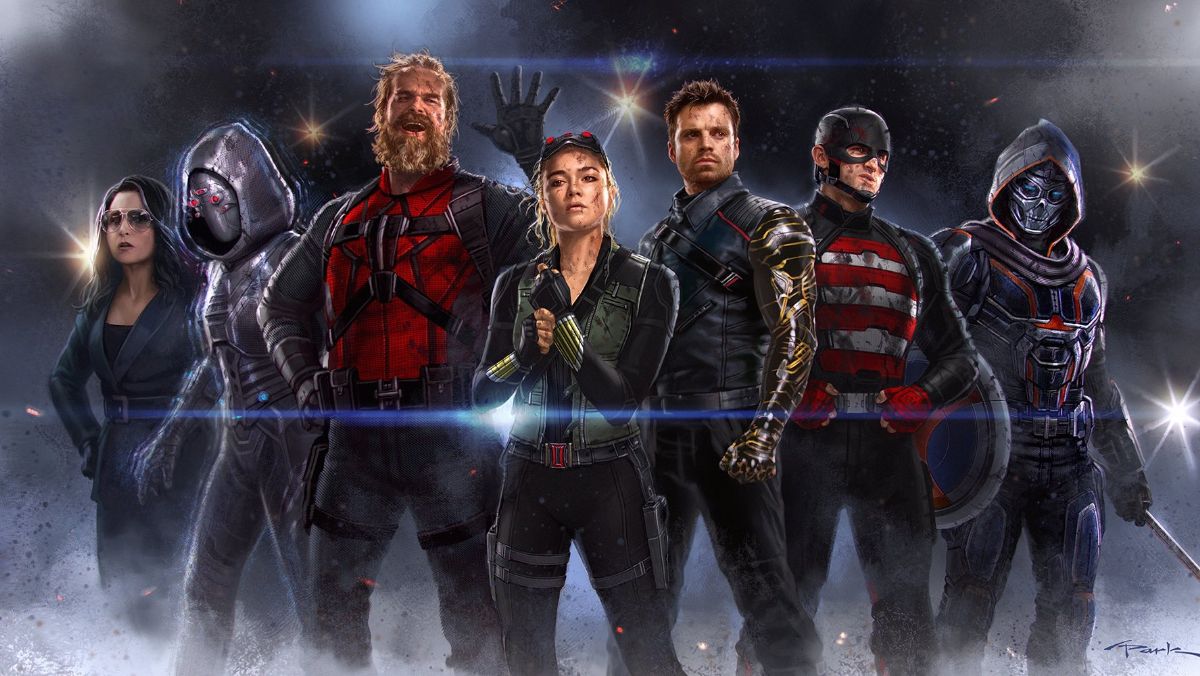
Marvel Studios’ Thunderbolts has officially landed, and it’s already stirring up conversation across fandoms, critics, and casual viewers alike. Released on May 2, 2025, as the 36th film in the Marvel Cinematic Universe, Thunderbolts marks the explosive conclusion to Phase Five. But this isn’t your typical superhero ensemble. Instead of noble Avengers or cosmic guardians, Thunderbolts assembles a ragtag crew of morally gray misfits, each carrying emotional baggage, questionable loyalties, and a past they’d rather forget.
Directed by Jake Schreier and written by Eric Pearson and Joanna Calo, the film dives deep into themes of redemption, trauma, and reluctant camaraderie. With a star-studded cast including Florence Pugh, Sebastian Stan, Wyatt Russell, David Harbour, Julia Louis-Dreyfus, and more, Thunderbolts delivers a gritty, character-driven story that challenges the very idea of heroism in the MCU.
Who Are the Thunderbolts?
The Thunderbolts are not new to Marvel Comics, but their cinematic debut brings a fresh interpretation. In the film, Valentina Allegra de Fontaine (played by Julia Louis-Dreyfus) recruits a team of disillusioned antiheroes for a covert mission that quickly spirals into chaos. The lineup includes:
- Yelena Belova (Florence Pugh): The sharp-tongued assassin and former Black Widow steps into a leadership role, balancing tactical brilliance with emotional vulnerability.
- Bucky Barnes (Sebastian Stan): Still haunted by his Winter Soldier past, Bucky serves as the team’s moral compass and strategic anchor.
- Red Guardian (David Harbour): Equal parts muscle and comic relief, Alexei Shostakov brings Soviet bravado and surprising depth.
- John Walker (Wyatt Russell): The volatile U.S. Agent struggles with his identity and the consequences of his actions.
- Ghost (Hannah John-Kamen): Ava Starr’s phasing abilities are now more controlled, but her trust issues remain.
- Taskmaster (Olga Kurylenko): Antonia Dreykov returns with her photographic reflexes and a quiet intensity.
- Bob Reynolds (Lewis Pullman): A mysterious new addition whose powers hint at Sentry-level strength and instability.
Together, they’re thrown into a deadly trap orchestrated by Valentina herself, forcing them to confront their demons and decide whether they can truly function as a team.
A Mission That Tests Their Limits
The plot centers around a high-stakes operation in Kuala Lumpur, where the Thunderbolts must retrieve a dangerous piece of tech before it falls into the wrong hands. What begins as a straightforward mission quickly unravels into a psychological gauntlet. Each character is forced to face their past, their regrets, and the consequences of their choices.
Unlike previous MCU team-ups, Thunderbolts doesn’t rely on flashy banter or seamless teamwork. Instead, it leans into dysfunction. The characters clash, argue, and occasionally betray one another. But through the chaos, moments of genuine connection emerge. Yelena and Bucky share a quiet understanding of loss. Red Guardian and Ghost bond over their fractured identities. Even John Walker finds a sliver of redemption in the heat of battle.
The film’s emotional core lies in its exploration of trauma. These are not heroes in the traditional sense—they’re survivors. And Thunderbolts doesn’t shy away from showing the scars they carry.
A Bold Shift in Tone
Visually and tonally, Thunderbolts feels distinct from its predecessors. Cinematographer Andrew Droz Palermo crafts a moody, grounded aesthetic that complements the film’s darker themes. The action sequences are brutal and intimate, favoring hand-to-hand combat and tactical maneuvers over cosmic spectacle.
Son Lux’s haunting score adds emotional weight, weaving tension and melancholy into every scene. The editing by Angela Catanzaro and Harry Yoon keeps the pacing tight, allowing character moments to breathe without sacrificing momentum.
This tonal shift is intentional. Marvel has long been criticized for its formulaic approach, but Thunderbolts breaks the mold. It’s not about saving the world—it’s about saving themselves.
Critical Reception and Fan Response
Early reviews have praised the film’s character work and emotional depth. Critics have highlighted Florence Pugh’s commanding performance as Yelena, calling her the “emotional anchor” of the film. Sebastian Stan’s portrayal of Bucky Barnes continues to evolve, offering a nuanced look at a man trying to reconcile his past with his present.
Julia Louis-Dreyfus brings a deliciously manipulative energy to Valentina, cementing her role as one of the MCU’s most intriguing puppet masters. David Harbour and Wyatt Russell provide standout moments, balancing humor with pathos.
Fans have responded enthusiastically, especially to the film’s final twist. In a surprise move, the Thunderbolts are rebranded as the “New Avengers” during the end credits, signaling a major shift in the MCU’s future. This rebranding has sparked endless speculation about Phase Six and the role these antiheroes will play moving forward.
The Asterisk Explained
One of the most talked-about elements of the film is its title—Thunderbolts with an asterisk. Throughout the marketing campaign, the asterisk was a source of mystery. In the film’s final moments, it’s revealed that the asterisk signifies a transformation. The team, once fractured and reluctant, has earned a new identity. The title card changes to The New Avengers, marking a symbolic passing of the torch.
This clever narrative device not only redefines the team but also sets the stage for future crossovers. With the original Avengers largely retired or scattered, the MCU needs new blood. And the Thunderbolts, despite their flaws, have proven they’re up to the challenge.
What’s Next for the Thunderbolts?
With the film’s success and the rebranding twist, it’s clear that Marvel has big plans for this team. Rumors are already swirling about a New Avengers sequel, potential Disney+ spin-offs, and crossover appearances in upcoming Phase Six projects.
Yelena Belova is expected to take a central role in future MCU narratives, possibly leading the New Avengers. Bucky Barnes may finally find peace—or face new threats from his past. Red Guardian and Ghost could explore their own arcs in standalone stories, while Bob Reynolds’ mysterious powers hint at a deeper cosmic connection.
Valentina Allegra de Fontaine remains a wildcard. Her motives are still unclear, and her influence over the team raises questions about loyalty and manipulation. As the MCU continues to evolve, her role could become even more pivotal.
Final Thoughts
Thunderbolts is more than just a team-up movie—it’s a character study, a redemption arc, and a bold reimagining of what a superhero film can be. By focusing on flawed individuals and their messy journey toward unity, Marvel has delivered one of its most emotionally resonant entries to date.
As the curtain falls on Phase Five, Thunderbolts leaves audiences with a powerful message: heroism isn’t about perfection—it’s about perseverance. And sometimes, the most unlikely team can become the one the world needs most.


Leave a Reply